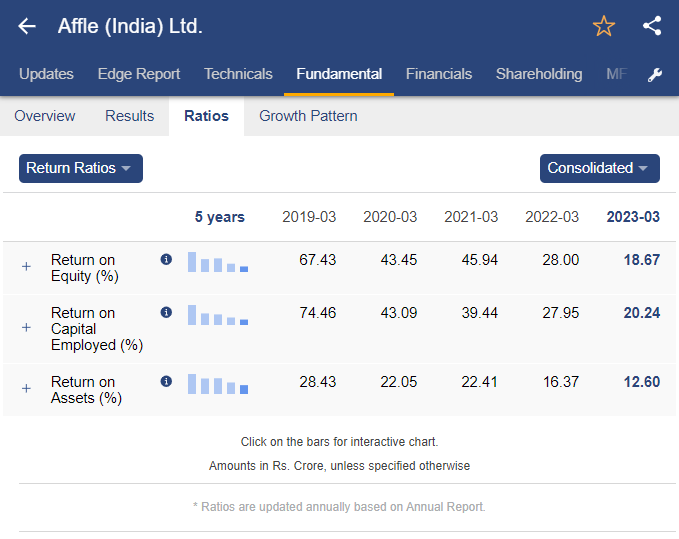20 New Ideas For Picking AI Stock {Investing|Trading|Prediction|Analysis) Websites
20 New Ideas For Picking AI Stock {Investing|Trading|Prediction|Analysis) Websites
Blog Article
Top 10 Tips To Evaluate The Ai And Machine Learning Models Of Ai Platform For Analyzing And Predicting Trading Stocks
In order to ensure that you have precise, reliable, and useful insights, it is essential to assess the AI and machine-learning (ML) models employed by trading and prediction platforms. Models that have been not well-designed or over-hyped can lead to inaccurate predictions as well as financial loss. Here are 10 of the most useful ways to evaluate the AI/ML models of these platforms.
1. The model's purpose and approach
It is crucial to determine the goal. Find out if the model was designed to be used for long-term investment or short-term trading.
Algorithm transparency - Examine to determine if there are any information about the algorithms (e.g. decision trees neural nets, neural nets, reinforcement learning, etc.).
Customizability: Determine whether the model can be adapted to your particular trading strategy or tolerance for risk.
2. Evaluation of Model Performance Metrics
Accuracy: Make sure to check the accuracy of the model's predictions, but don't rely solely on this metric, as it could be misleading in financial markets.
Accuracy and recall: Check how well the model can discern real positives, e.g. correctly predicted price fluctuations.
Risk-adjusted gains: Determine whether the forecasts of the model result in profitable transactions after accounting for the risk.
3. Make sure you test your model using backtesting
Historical performance: Use historical data to backtest the model and determine the performance it could have had under the conditions of the market in the past.
Testing outside of sample The model should be tested using data it wasn't trained on in order to avoid overfitting.
Scenario-based analysis involves testing the accuracy of the model under different market conditions.
4. Check for Overfitting
Signs of overfitting: Search for models that are overfitted. These are models that perform extremely well on training data and less well on unobserved data.
Regularization techniques: Check if the platform employs methods like normalization of L1/L2 or dropout in order to prevent overfitting.
Cross-validation. Ensure the platform performs cross validation to determine the model's generalizability.
5. Evaluation Feature Engineering
Relevant features: Verify that the model has relevant attributes (e.g. price or volume, as well as technical indicators).
Selecting features: Ensure that the platform chooses features that are statistically significant, and do not include irrelevant or redundant information.
Updates to features that are dynamic Check to see whether the model adjusts to the latest features or market changes.
6. Evaluate Model Explainability
Interpretability (clarity) Clarity (interpretation): Make sure to verify that the model explains its predictions clearly (e.g. value of SHAP or feature importance).
Black-box models: Be wary of systems that employ excessively complicated models (e.g. deep neural networks) without explanation tools.
User-friendly Insights: Verify that the platform offers useful information in a format that traders can easily understand and utilize.
7. Assess the model Adaptability
Market changes. Check if the model is able to adapt to changes in the market (e.g. the introduction of a new regulation, an economic shift or a black swan phenomenon).
Verify that your platform is updating its model on a regular basis by adding new data. This will increase the performance.
Feedback loops: Make sure the platform incorporates feedback from users or actual results to help refine the model.
8. Look for Bias and Fairness
Data bias: Check whether the information in the training program is representative and not biased (e.g. an bias towards specific sectors or times of time).
Model bias: Determine if the platform actively monitors and mitigates biases in the predictions made by the model.
Fairness: Make sure that the model does favor or disfavor specific types of stocks, trading styles, or industries.
9. Assess Computational Effectiveness
Speed: Assess whether the model is able to generate predictions in real time or with minimal latency, specifically in high-frequency trading.
Scalability: Find out whether the platform can manage multiple users and large datasets without performance degradation.
Resource usage : Check whether the model is optimized to make use of computational resources effectively (e.g. GPU/TPU).
Review Transparency, Accountability and Other Issues
Model documentation - Ensure that the platform has detailed details about the model including its structure, training processes, and limitations.
Third-party audits : Confirm that your model was audited and validated independently by third-party auditors.
Error handling: Check to see if the platform incorporates mechanisms for detecting or fixing model errors.
Bonus Tips
Case studies and user reviews Utilize feedback from users and case studies to gauge the real-world performance of the model.
Trial period: Use an unpaid trial or demo to evaluate the model's predictions as well as its the model's usability.
Support for customers: Ensure that the platform can provide solid customer support that can help solve any product or technical problems.
If you follow these guidelines by following these tips, you will be able to evaluate the AI and ML models on stock prediction platforms, ensuring they are accurate, transparent, and aligned to your goals in trading. See the best trader ai app tips for more recommendations including best ai trading software, ai stocks to invest in, stock ai, ai stock price prediction, ai trading tools, trader ai, coincheckup, ai invest, trading chart ai, ai for investing and more.
Top 10 Tips To Assess The Regulatory Conformity Of Ai Stock Predicting/Analyzing Trading Platforms
The regulatory compliance of trading platforms that employ AI to analyze or predict price movements is a crucial aspect. Compliance can help ensure that the platform is operating within legal frameworks and protecting personal data of the users. Here are 10 best suggestions to evaluate the regulatory compliance on these platforms.
1. Verify License and Registration
Authorities regulating the platform: Make sure that the platform's license and registration is with the appropriate financial regulatory authorities (e.g. SEC or FCA in USA, ASIC or ASIC in Australia).
Broker partnerships: If the platform incorporates brokers, make sure that brokers are properly licensed and regulated.
Public records: Visit the website of the regulator to check on the status of registration and the history of violations.
2. Look for data privacy Compliance
GDPR If a platform is operating within the EU or offering services to EU users the platform must comply with the General Data Protection Regulation.
CCPA -- California Consumer Privacy Act: Check for compliance with California users.
Policies on handling data: Read the policy on data privacy of the platform to ensure it outlines the ways in which user data is gathered, stored, and transferred.
3. Examine the Anti-Money Laundering(AML) Actions
AML Policies The platform must have strong AML (Anti-Money Laundering) policies to detect money laundering and stop it.
KYC procedures - Check that the platform follows Know Your Customer procedures for verification of user identities.
Review the platform's transaction monitoring. Does it keep track of transactions and report any suspicious activity to relevant authorities?
4. Make sure you are in compliance with Trading Regulations
Market manipulation: Be sure that the platform has safeguards put in place to protect against market manipulation, including spoofing trading or wash trading.
Order types. Check to see whether your platform meets the rules for orders.
Best execution: Examine to determine if the platform adheres best execution practice, which ensures that trades will be executed at the cheapest cost.
5. Cybersecurity Compliance:
Data encryption: Make sure the platform protects data during the transfer process and in rest, using encryption.
Response to incidents. Verify that there is an incident response plan on the platform to deal with cyberattacks as well as data breaches.
Certifications: Check if the platform is certified in cybersecurity (e.g., ISO 27001, SOC 2).
6. Transparency Evaluation and Transparency Evaluation and Disclosure
Fee disclosure - Ensure that the fees are fully made public, including hidden or additional charges.
Risk disclosure: Verify if the platform offers clear risk disclosures, specifically for leveraged or high-risk trading strategies.
Performance reporting: Ensure that the platform is clear and accurate information regarding the accuracy of its AI models.
7. Verify that you are in compliance with International Regulations
Cross-border Trading: If your trading involves international trade You must make sure that the platform you use meets all requirements for regulatory compliance in every jurisdiction.
Tax reporting - Find out whether a platform offers tools and reports that will help users to comply with tax regulations.
Compliance with sanctions: Ensure that the platform is compliant with international sanctions and doesn't allow trading with banned entities or countries.
8. Assess Record-Keeping, Audit Trails
Transaction records: Make sure that the platform maintains complete records for purposes of regulation and for audit.
Records of activity by users: Determine whether the platform is recording the user's activity, including logins and trades as well as changes in account settings.
Audit-readiness: Find out if the platform will be able to produce all required documentation and logs needed for an audit by a regulatory agency.
9. Examine Compliance with AI-specific Regulations
Algorithmic rules for trading: If the platform allows algorithmic trading, it should comply with European regulations like MiFID II and U.S. Reg SCI.
Fairness and Bias: Check to see if there are any biases that the platform is able to monitor and mitigate in the AI model. This ensures fair and ethical trade.
Explainability: Certain regulations require that platforms give explanations for AI-driven predictions or choices.
10. Review User Comments as well as Regulatory Historical The History
User reviews: Make use of user feedback to determine the platform's regulatory conformity.
Regulatory history: Verify if any regulatory violations were committed, and also penalties and fines.
Third-party checks: Verify that the platform is in compliance with regulations by checking whether it has periodic audits from third party.
Bonus Tips
Legal consultation: Think about consulting an expert in the field of law to examine the platform's compliance with relevant rules.
Trial period for free: You can avail a demo or a free trial to test the compliance features of the platform as well as its documentation.
Customer support: Make sure the platform offers support for questions or issues that concern compliance.
With these guidelines, it is possible to identify the level of compliance with regulations within AI stock trading platforms. This allows you to choose a platform operating within legal frameworks that will protect your interests. It is essential to be in compliance as it does not just reduce the risk of legal liability, but also builds trust and confidence for the platform. Have a look at the best best ai stock recommendations for website info including incite, best stock analysis website, getstocks ai, ai investment advisor, ai stock price prediction, ai trading platform, copyright ai trading bot, stock analysis tool, using ai to trade stocks, chatgpt copyright and more.